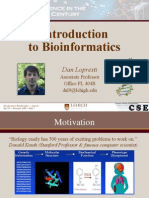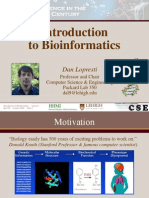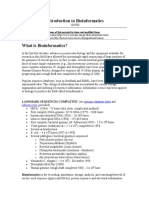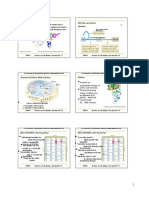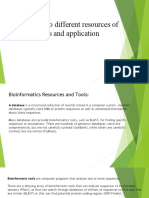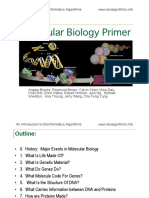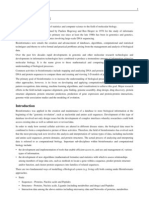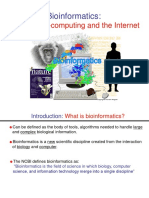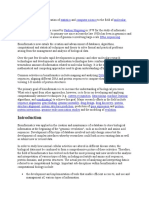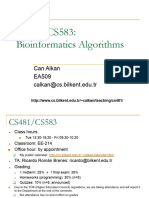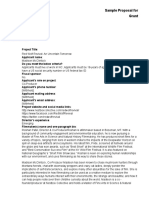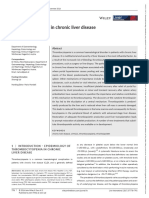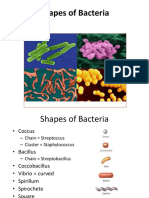0% found this document useful (0 votes)
325 views54 pagesDNA Mapping and Brute Force Algorithms!
The document discusses algorithms for mapping DNA sequences using restriction enzymes and gel electrophoresis. It introduces restriction enzymes, which cut DNA at specific recognition sites, and how partial restriction digests can be used to determine the positions of restriction sites. It describes the partial digest problem, where the goal is to reconstruct the positions of restriction sites given only the sizes of DNA fragments between cuts from a partial digest.
Uploaded by
Joshua HeilmanCopyright
© Attribution Non-Commercial (BY-NC)
We take content rights seriously. If you suspect this is your content, claim it here.
Available Formats
Download as PDF, TXT or read online on Scribd
0% found this document useful (0 votes)
325 views54 pagesDNA Mapping and Brute Force Algorithms!
The document discusses algorithms for mapping DNA sequences using restriction enzymes and gel electrophoresis. It introduces restriction enzymes, which cut DNA at specific recognition sites, and how partial restriction digests can be used to determine the positions of restriction sites. It describes the partial digest problem, where the goal is to reconstruct the positions of restriction sites given only the sizes of DNA fragments between cuts from a partial digest.
Uploaded by
Joshua HeilmanCopyright
© Attribution Non-Commercial (BY-NC)
We take content rights seriously. If you suspect this is your content, claim it here.
Available Formats
Download as PDF, TXT or read online on Scribd
/ 54









